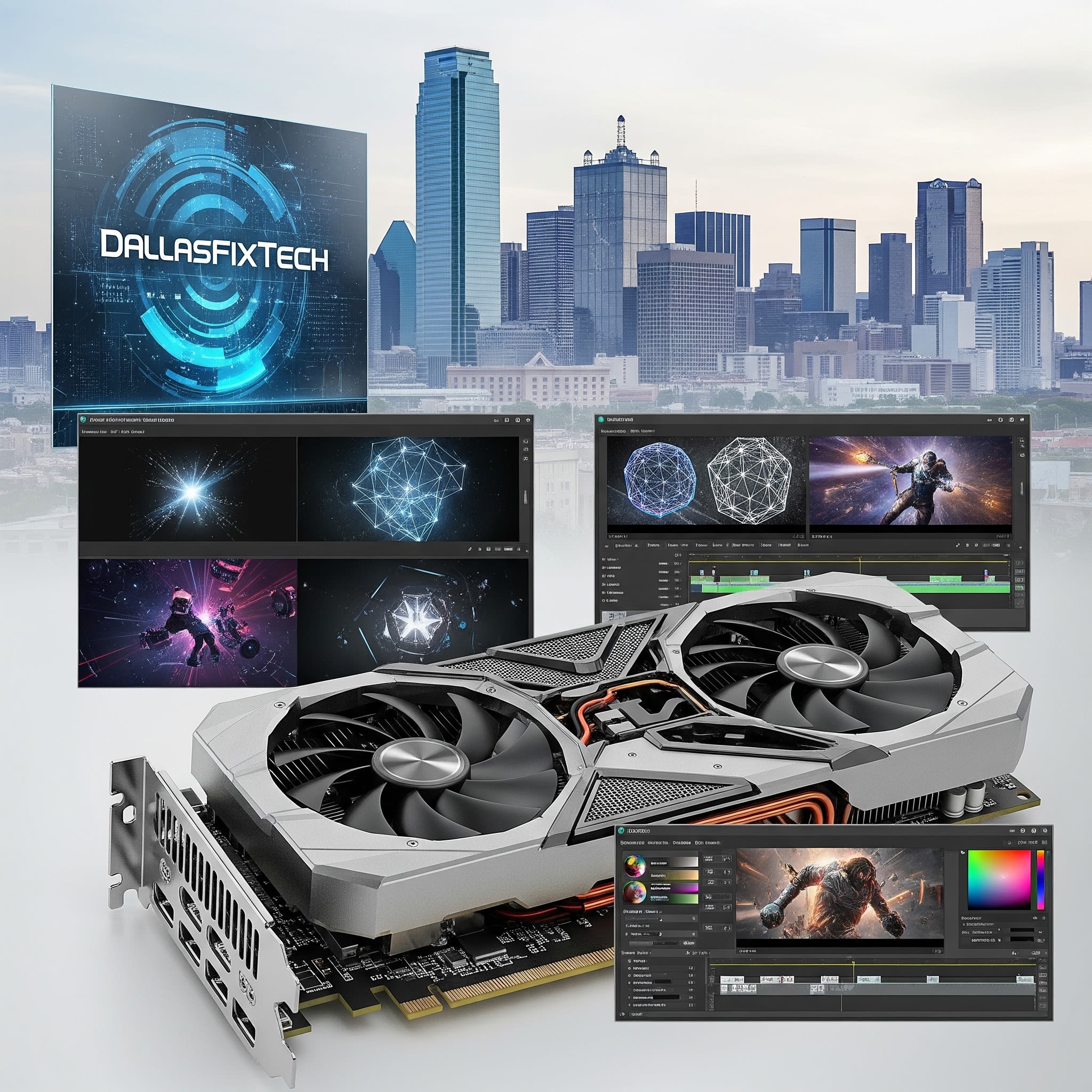
Understanding Graphics Cards (GPUs): DallasFixTech Hardware Insights for Performance & Visuals
When it comes to your computer's visual experience—whether you're immersed in a high-fidelity video game, rendering complex 3D models, editing high-resolution videos, or simply Browse the web—the **graphics card** (also known as a **GPU** or Graphics Processing Unit) plays the most critical role. This specialized processor is designed to rapidly render images, videos, and animations. Understanding the basics of how GPUs work and their key specifications is essential for making informed decisions about your computer's visual capabilities. **DallasFixTech** is here to provide essential **hardware insights** for Dallas, TX, users, explaining how graphics cards fundamentally impact performance for both gaming and professional use.
DallasFixTech Explains GPU Essentials: Dedicated vs. Integrated & Key Specs
Demystifying the core concepts of graphics processing:
- Dedicated (Discrete) GPUs: These are separate, powerful cards with their own dedicated video RAM (VRAM) and cooling systems. They are essential for demanding tasks like AAA gaming, professional video editing, 3D rendering, and graphic design. Examples include NVIDIA GeForce RTX/GTX series and AMD Radeon RX series.
- Integrated GPUs: These graphics processors are built directly into the CPU. They share system RAM with the main processor and are suitable for everyday tasks, web Browse, streaming, and light productivity. While they're becoming more capable, they generally cannot match the performance of dedicated GPUs.
Key GPU Specifications to Understand:
- VRAM (Video RAM): This is the dedicated memory on the graphics card where textures and graphical data are stored. More VRAM allows for higher resolutions, more detailed textures, and better performance in demanding games and applications (e.g., 8GB, 12GB, 16GB+).
- Clock Speed (Core Clock & Boost Clock): Measured in MHz or GHz, this indicates how fast the GPU's processor cores operate. Higher clock speeds generally mean more processing power.
- CUDA Cores (NVIDIA) / Stream Processors (AMD): These are the thousands of small, specialized processing units within the GPU that perform parallel computations, crucial for graphics rendering and GPGPU (General-Purpose computing on GPUs) tasks. More cores generally mean better performance.
- Bus Width & Memory Bandwidth: The 'bus width' (e.g., 256-bit, 384-bit) combined with memory speed determines the 'memory bandwidth'—how quickly the GPU can access its VRAM. Higher bandwidth is critical for high-resolution gaming.
- Ray Tracing Cores / Tensor Cores (NVIDIA): Specialized cores for advanced rendering techniques (ray tracing for realistic lighting) and AI-driven features (DLSS for performance boosting).
Choosing the Right GPU for Your Needs: DallasFixTech Advice
Your ideal GPU depends on your primary usage:
- For Gaming: Prioritize a dedicated GPU with ample VRAM and high core counts for smooth frame rates at your desired resolution.
- For Graphic Design / Video Editing: Look for a dedicated GPU with plenty of VRAM and strong GPGPU performance for faster rendering and smoother workflow in applications like Adobe Premiere Pro, Photoshop, or Blender.
- For Everyday Use / Web Browse: Integrated graphics are typically sufficient, offering good performance without the added cost or power consumption of a dedicated card.
Upgrade Your System with Expert Advice from DallasFixTech in Dallas, TX!
Understanding your graphics card is a key step to optimizing your visual experience. Upgrade your system or get expert advice from **DallasFixTech** in Dallas, TX. We offer consultations, GPU upgrades, and full gaming PC builds to ensure your visual experience is top-notch! **Contact us today!**